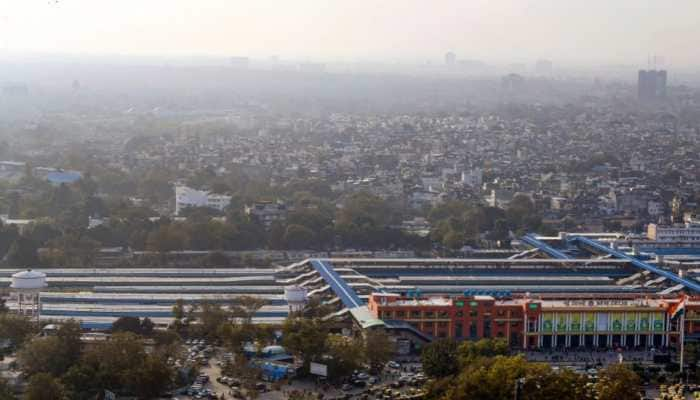Bizarre discovery! Scientists say Earth was a 'donut-shaped' mass of hot, vaporised rock
Current theories of planet formation hold that rocky planets such as the Earth, Mars and Venus formed early in the existence of our solar system as smaller objects collided with each other.
Trending Photos
) (Image for representational purposes only)
(Image for representational purposes only) New Delhi: Since time immemorial, we have known our home planet Earth to be round and whole. But, there are many evolutionary secrets that Earth harbours and decides to reveal them to its inhabitants one by one.
For instance, the fact that early in its history, our home planet was likely a huge, spinning, donut-shaped mass of hot, vaporised rock, now called a "synestia", according to a new study.
In a paper published in the Journal of Geophysical Research: Planets, the researchers proposed that a synestia formed as planet-sized objects smashed into each other.
For the study, planetary scientists Simon Lock at Harvard University and Sarah Stewart at the University of California – Davis explored how planets can form from a series of giant impacts.
Current theories of planet formation hold that rocky planets such as the Earth, Mars and Venus formed early in the existence of our solar system as smaller objects collided with each other.
These collisions were so violent that the resulting bodies melted and partially vaporised, eventually cooling and solidifying to the (nearly) spherical planets we know today.
"We looked at the statistics of giant impacts, and we found that they can form a completely new structure," Stewart said.
The researchers found that over a range of high temperatures and high angular momentum, planet-sized bodies could form a new, much larger structure, an indented disk rather like a red blood cell or a donut with the centre filled in.
The object is mostly vaporised rock, with no solid or liquid surface.
They dubbed the new object a "synestia," from "syn-," "together" and "Hestia," Greek goddess of architecture and structures.
The key to synestia formation is that some of the structure's material actually goes into orbit. In a spinning solid sphere, every point from the core to the surface is rotating at the same rate.
But in a giant impact, the material of the planet can become molten or gaseous and expands in volume.
If it gets big enough and is moving fast enough, parts of the object pass the velocity needed to keep a satellite in orbit, and that is when it forms a huge, disk-shaped synestia, the researchers said.
Most planets likely experience collisions that could form a synestia at some point during formation, Stewart said.
No one has yet observed a synestia directly, but the researchers believe that they might be found in other solar systems once astronomers start looking for them alongside rocky planets and gas giants.
(With IANS inputs)
Stay informed on all the latest news, real-time breaking news updates, and follow all the important headlines in india news and world News on Zee News.
Live Tv







)
)
)
)
)
)
)
)
)
)
